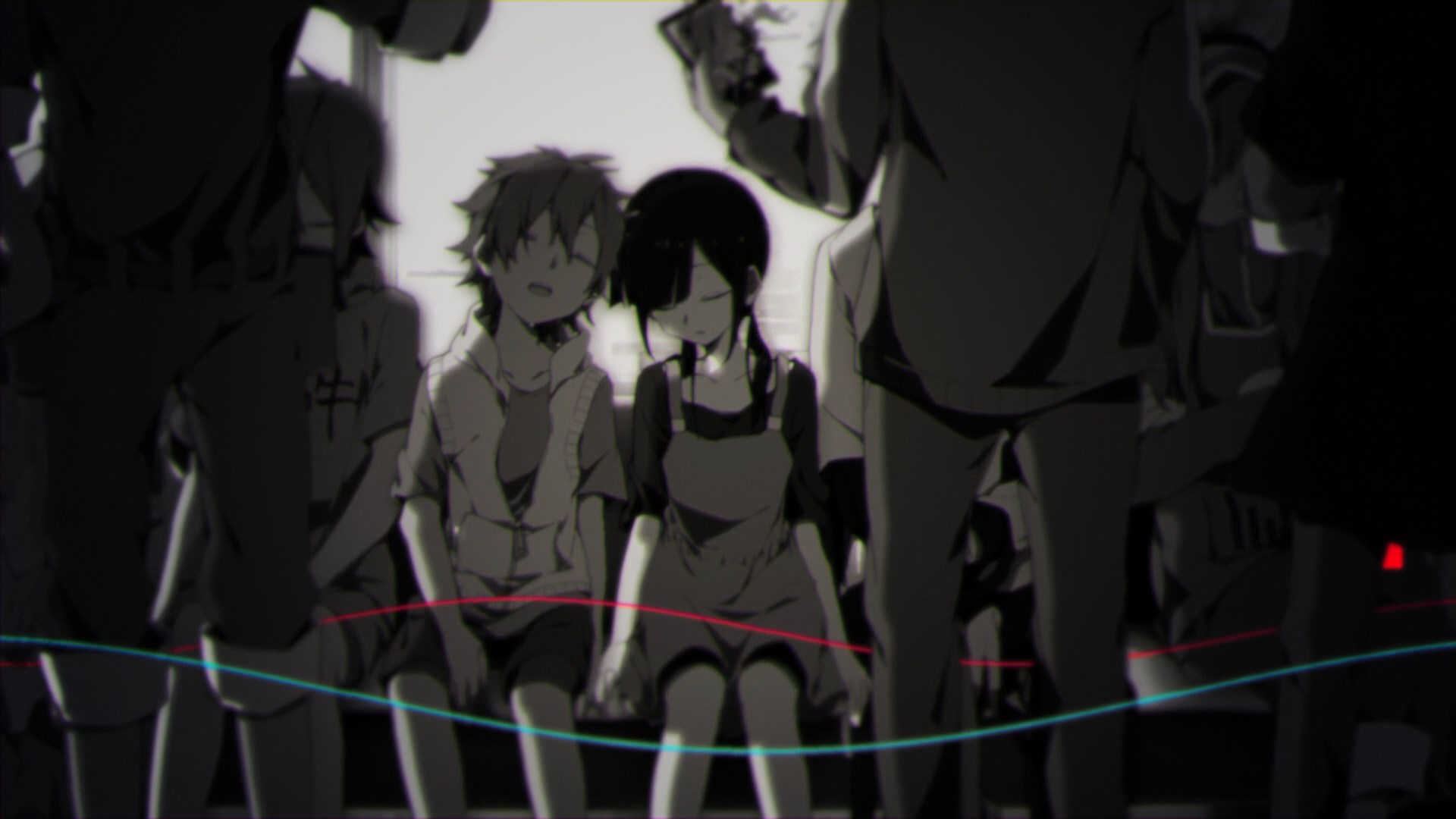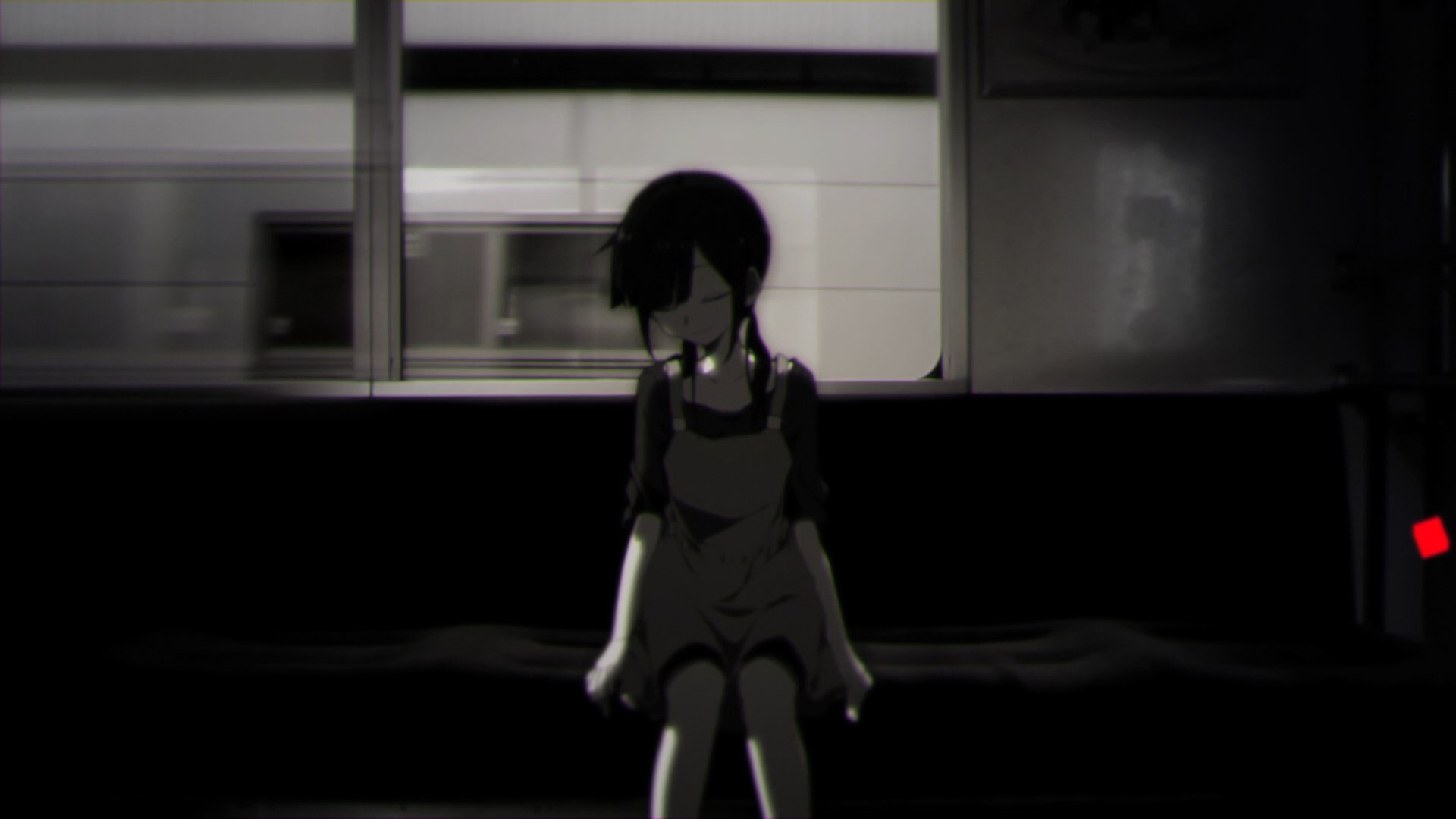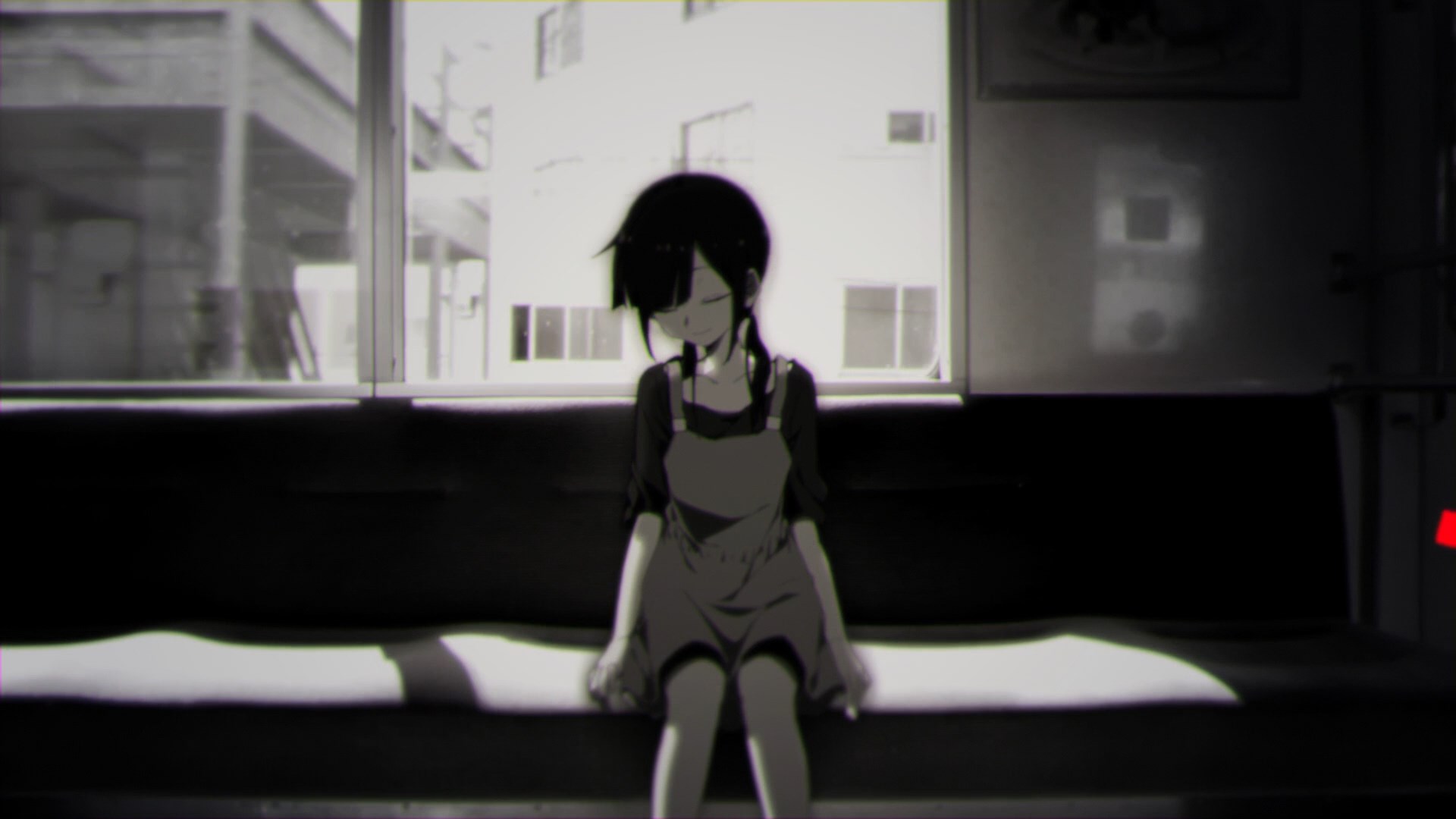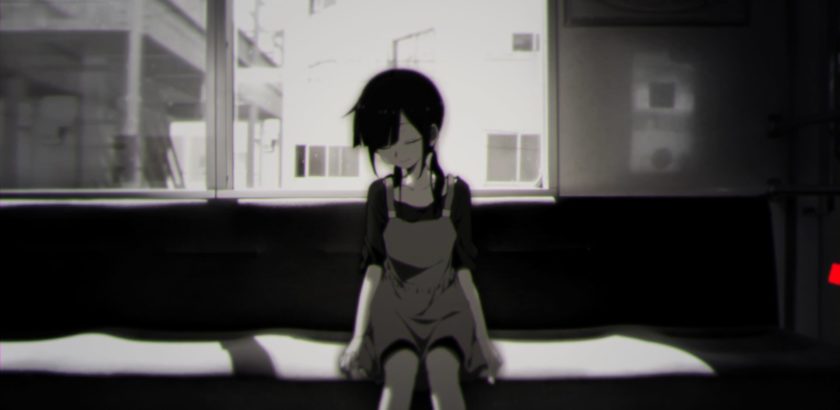Angel Beats ED and Mekaku City Actors ED have a shockingly similar storyboard, in one line: Main character has many friends appear one by one throughout the sequence. However, the difference in the way which they animate this storyboard shows the difference in artistic creativity between studios. Angel Beats ED is animated by PA Studio in 2010, and it has been generally well-received, with a score of 8.29 on MAL. Mekaku City Actors is animated by Studio Shaft in 2014, and it has not been rated as well by most people, with a score of 7.18 on MAL. We will start by looking at Angel Beats ED.
Angel Beats ED
The camera slowly pans out as her group of friends appear one by one alongside her at a steady pace. This symbolizes the friendship and camaraderie that came together and built up across the time they spent together. The animation is accompanied by ‘Brave Song’ by Aoi Tada, a melancholic tune which touches my heart every time I hear it.
With Angel Beats ED in mind, let’s continue on to Mekaku City Actors ED.
Mekaku City Actors ED
Firstly, we hear the ED song, “Days” by Jin feat. Lia, which pretty much has the exact same tone as ‘Brave Song’, a slow melancholic tune.
Next, we see the main character alone, just like in Angel Beats, but the animation is in grey scale. The reason isn’t due to some pretentious artsy decision. For the first 10 seconds, most of the scene is kept dark and that makes it hard to tell, but soon after that, the moving scenery outside the window comes into plain view; We then observe that other than the main character, the background is in fact a real life video. Using videography for this background is really effective as traditional animation would not realistically achieve the level of details and smoothness of animation of the passing scenery. However, mixing 2D animation and 3D videography contents is usually very jarring as the visual style differs greatly. Here, the grey scale effect serves to make the blend between animation and videography seamless, and in this case, they have managed to do so.
For the first 37 seconds, no one else appears. At the 37th second, we see a character, Ayano, appear outside the train window as the scene pauses for a couple of seconds, and this syncs up perfectly with the lead-in to the chorus. This is a wonderful audio-visual synchronization effect done by the studio. In the story, Ayano was the founder of the group, Mekakushi Dan, and in this animation, only after Ayano appears, does the sequence of people appearing start. The circle of friends appear one by one alongside the main character at a steady pace, which exactly like Angel Beats, symbolizes the friendship and camaraderie built between the characters.
However, at 1:18, her friends disappear, leaving her alone. This part is easy to miss as she’s in the shade, but she actually changes expression from neutral to a smile at this point. Only after 3 seconds, where the train moves out of the shade into the light, it becomes easier to spot her smile, but only if you are closely looking. The animators possibly wanted to express how the ending might seem like an unhappy end at first thought, but the revealing of the final smiling expression signifies the character’s happiness with the story’s resolution. She soon follows her friends and disappears as well, mirroring the story where all the characters manage to leave the fantasy world and return to the real world.



Screenshots of the changing expression (Click to open image in full resolution). Only at 1080p quality can it be easily observed, and even then, it is almost unnoticeable in the shade.
There were so much more intricacies and artistic efforts in the making of Mekaku City Actors ED, in contrast to Angel Beats ED, even if the show itself may not be superior. We see the audio-visual synchronization effort in the former, while Angel Beats ED could be overlaid with a completely different song and nobody would be able to tell. Studio Shaft went the extra mile to film a scenery video from a train and integrated it superbly with 2D animation to create a more engaging visual experience for the viewer. Studio Shaft also added small details with important meanings, to reward attentive viewers with details that builds on to our understanding of the show and the story line. This comparison serves to show the importance of artistic creativity and effort and how it can make an artistic product contain much more meaning and be a more pleasant and engaging experience.
